The Crucial MX300 750GB SSD Review: Micron's 3D NAND Arrives
by Billy Tallis on June 14, 2016 9:00 AM ESTAnandTech Storage Bench - The Destroyer
The Destroyer is an extremely long test replicating the access patterns of very IO-intensive desktop usage. A detailed breakdown can be found in this article. Like real-world usage and unlike our Iometer tests, the drives do get the occasional break that allows for some background garbage collection and flushing caches, but those idle times are limited to 25ms so that it doesn't take all week to run the test.
We quantify performance on this test by reporting the drive's average data throughput, a few data points about its latency, and the total energy used by the drive over the course of the test.
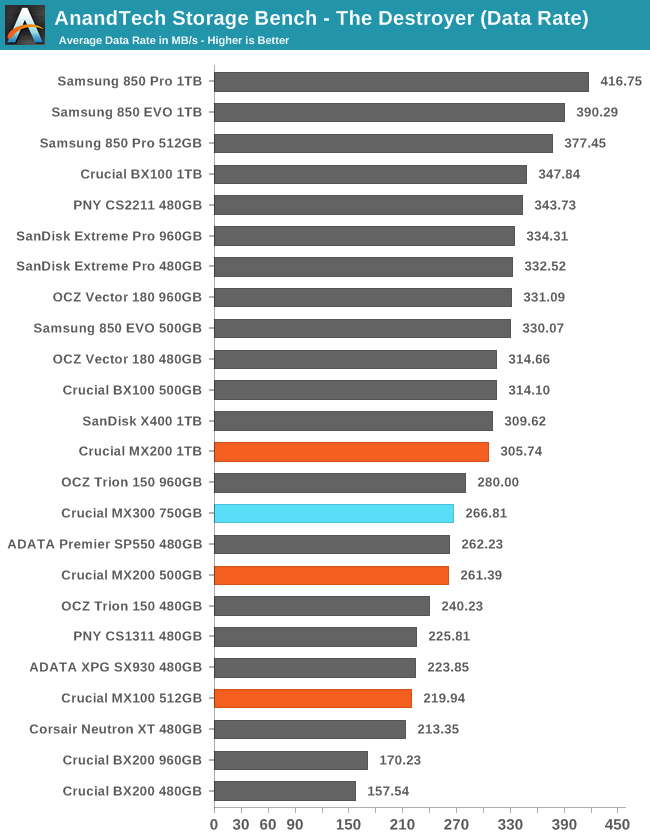
The average data rate for the MX300 is between the scores of the 1TB and 500GB MX200 but a little closer to the latter. This is acceptable performance but not really an upgrade over the MX200.
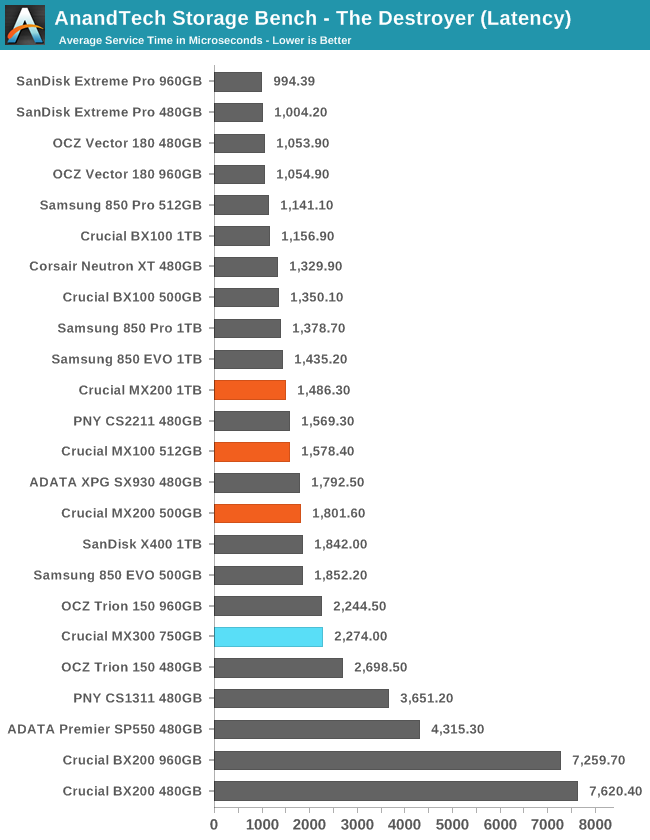
The average service time of the MX300 is slow enough to put it among the budget planar TLC drives and well behind the SanDisk X400.
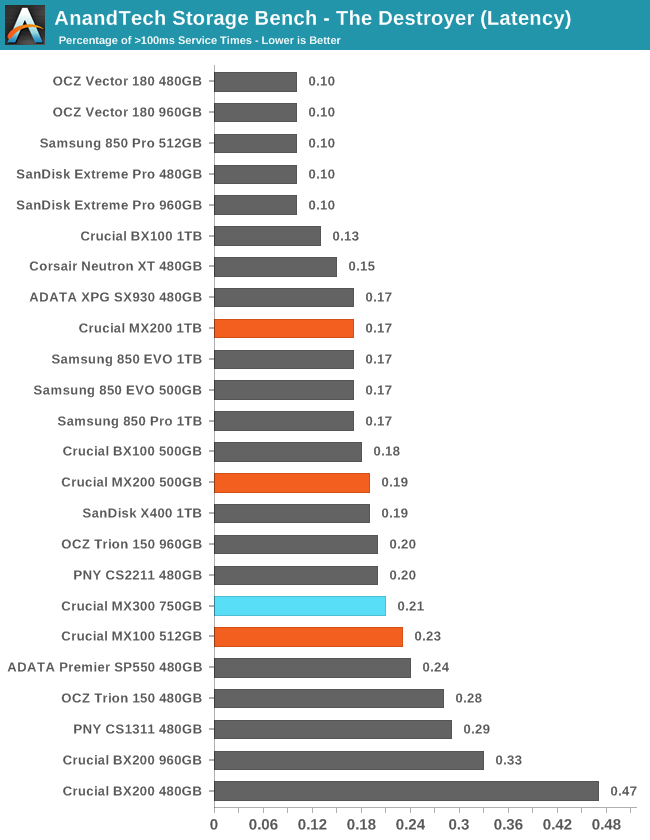
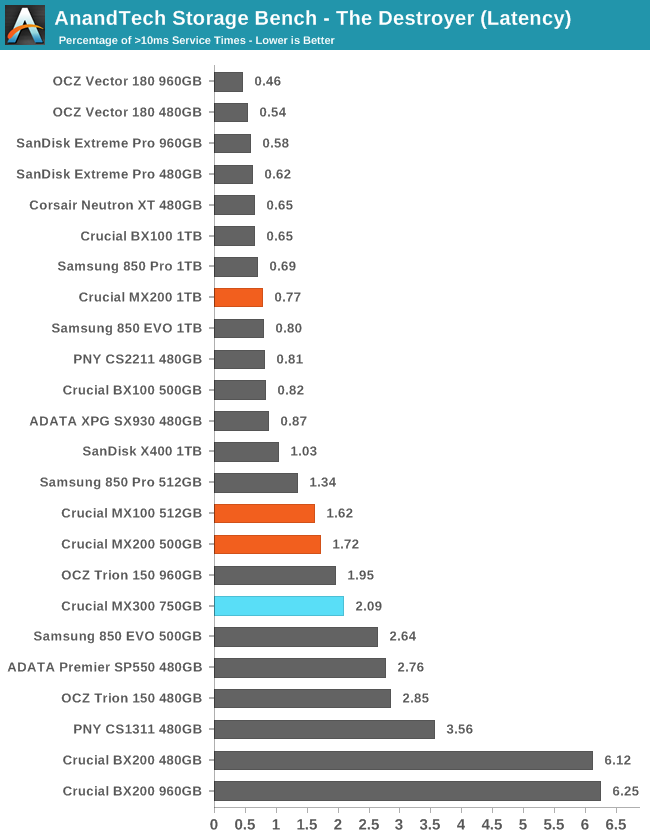
The MX300 has a higher frequency of both moderate and severe latency outliers than the MX200, but it isn't a huge discrepancy. The performance relative to the SanDisk X400 shows that there is room for improvement.
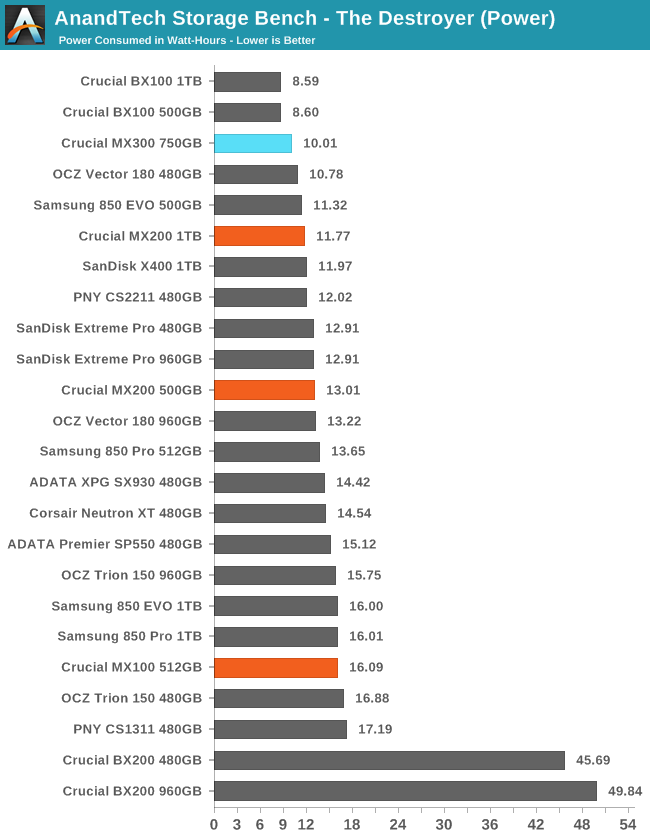
The MX300's power consumption comes in a distant second place behind the BX100, but this is still remarkable efficiency for a TLC drive.










85 Comments
View All Comments
euskalzabe - Sunday, June 19, 2016 - link
Excellent reply, bravo.tonyman - Thursday, June 23, 2016 - link
To refute your point that "Nobody Uses SSDs for Cold Storage", I'll give a real-world counterexample... I make a machine vision system that I sell into a factory environment. I build the PCs that the system runs on, and sell it as a turnkey system. For reliability and performance, these PCs are equipped with SSDs as their boot and data drives. As this system, and therefore the PC it runs on, is mission critical, many customers purchase extra preconfigured PCs from us... which can sit around for several years before being used. Data retention on the boot drives of these cold-stored PCs is therefore quite a big issue... one I was ignorant of until a year or so ago, unfortunately. Oops.JKJK - Thursday, June 23, 2016 - link
Raid 0 for storage?Russian rulette ... catch you on the flipside.
sor - Tuesday, June 14, 2016 - link
The MX300 had best in class mixed read/write power performance, and close to the best in other power benchmarks. It seems to beat it's primary competitors (< $.30/GB) on performance, like the OCZ Trion. It could be a better value to make it an obvious buy, but it seems fair to me. It costs less and performs worse than the > $.30/gb range and costs more and performs better than the < $.25/GB.barleyguy - Tuesday, June 14, 2016 - link
"uses more power" isn't accurate. The power usage under load is flat out excellent.Byte - Tuesday, June 14, 2016 - link
Pricing average for 1TB(960GB) is about $200 (you can get ocz trion or silicon power at this price point every day, they are decent mainstream SSDs). This would need to be $150 to even be worth considering. If this had better performance maybe I can see it being worth more. I used a ton of Crucial SSDs and they are fine, but so are pretty much all the other brands i've used. I've only had 1 sandisk low end SSD die on me, and i've handled a few hundred.Gondalf - Wednesday, June 15, 2016 - link
Techreport (and Anandtech) say the contrary and i think they are a lot more reliable than you like hardware testers.TheinsanegamerN - Tuesday, June 14, 2016 - link
More power hungry, worse endurance, slower, and more expensive then the competition. Truly an amazing drive ! /sJoeyJoJo123 - Tuesday, June 14, 2016 - link
Oh no! Less SSD endurance! My current SSD gets winded after only 30 seconds of running! Whatever shall I do with typical consumer I/O workloads and less "endurance"!?[/sarcasm]kyuu - Tuesday, June 14, 2016 - link
Do people even read the article before posting negative crap anymore?It's not more power hungry. In fact, the article shows that it's quite power efficient.
I also hope you're not seriously comparing the MSRP of this drive versus the street prices of other drives. Street prices are always lower than the MSRP, especially in the SSD market.